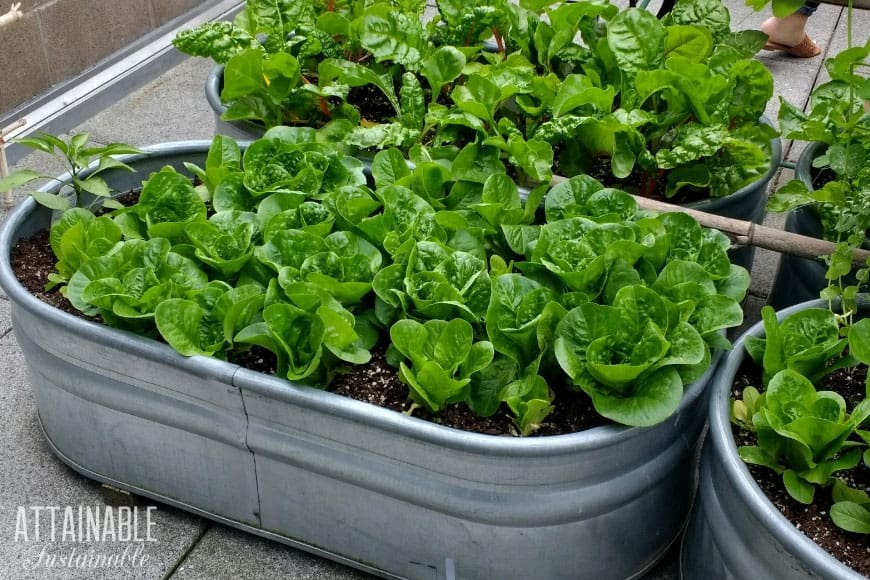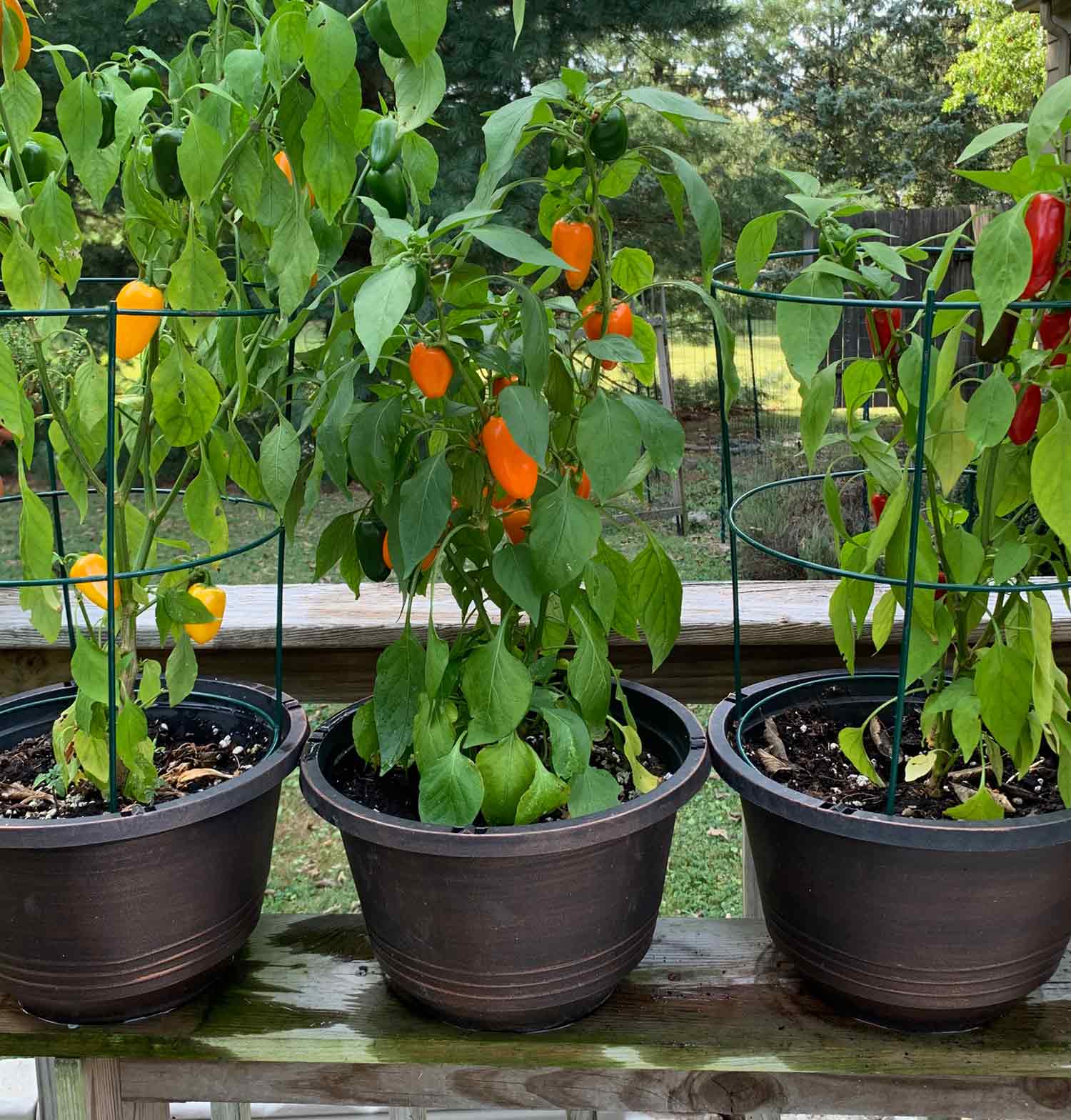As an Amazon Associate, I earn from qualifying purchases.
Vegetable container gardening is perfect for beginners with limited space. It’s an easy and rewarding way to grow fresh produce.
Starting a vegetable container garden allows you to cultivate fresh vegetables even in small spaces. Choose containers with good drainage and fill them with quality potting mix. Select vegetables suited for container gardening, such as tomatoes, peppers, lettuce, and herbs.
Place your containers in a location that receives at least six hours of sunlight daily. Regularly water your plants, ensuring the soil remains moist but not soggy. Fertilize every few weeks with a balanced, water-soluble fertilizer. Monitor for pests and diseases, taking action promptly if issues arise. With proper care, your container garden will flourish, providing fresh, homegrown vegetables.
Container Gardening
Container gardening is easy and fun. You can grow plants in small spaces. It is perfect for beginners. Containers can be placed anywhere, even on balconies. This makes gardening possible for everyone.
Soil control is another benefit. You can choose the best soil for your plants. This helps plants grow better. Pests are easier to manage in containers. Less space means fewer pests.
Watering is also simpler. You can water only the plants that need it. This saves water. Moving plants is easy too. You can move containers to get the best sunlight. This helps plants grow strong.

Credit: www.attainable-sustainable.net
Choosing The Right Containers
Plastic pots are light and easy to move. Clay pots look nice but can be heavy. Wooden boxes are natural and pretty. Metal containers are strong but can get hot. Fabric pots are light and foldable. Ceramic pots are colorful but can break.
Big containers are good for large plants. Small pots are good for herbs. Containers with holes let water drain out. Too much water can hurt plants. Use a tray to catch extra water. Check the size of your plants before choosing a pot.
Selecting Suitable Vegetables
Tomatoes grow well in containers. Peppers also fit well in small spaces. Lettuce is another great choice. Radishes thrive in pots too. Spinach does well in containers. Herbs like basil grow perfectly in pots. Bush beans fit well in containers.
Tomatoes grow well with basil. Peppers like being near onions. Lettuce enjoys the company of carrots. Radishes grow well with cucumbers. Spinach likes growing near strawberries. Herbs like basil enjoy being near tomatoes. Bush beans like radishes.

Credit: lovelygreens.com
Soil And Fertilizer Essentials
Good soil is key to healthy plants. Use potting mix instead of garden soil. Potting mix is light and drains well. It also holds enough moisture for the plants. Look for a mix with perlite or vermiculite. These help keep the soil loose. Adding compost can improve the soil too. Compost provides nutrients and improves soil structure.
Organic fertilizers come from natural sources. Examples are compost, manure, and bone meal. They release nutrients slowly. This is good for long-term plant health. Organic options also improve soil health over time.
Synthetic fertilizers are man-made. They provide nutrients quickly. This can give plants a fast boost. But they do not improve soil health. Overuse can harm the soil and plants. Choose the type that fits your gardening style. Both have benefits and drawbacks.
Planting And Spacing Guidelines
Start with high-quality seeds for better growth. Use seed starting mix for best results. Plant seeds at the recommended depth. Keep the soil moist but not soggy. Provide adequate light for seedlings to grow strong.
Proper spacing helps plants grow healthy and strong. Tomatoes need at least 18 inches of space. Lettuce requires about 6 inches between plants. Carrots can be spaced 3 inches apart. Peppers need around 12 inches of space. Beans should have 4 inches between each plant.
Watering And Maintenance
Regular watering is crucial for vegetable container gardening. Ensure the soil remains moist but not waterlogged. Consistent maintenance, such as removing dead leaves, helps plants thrive.
Proper Watering Techniques
Water your plants in the morning. This helps the soil stay moist all day. Check the soil by sticking your finger 1 inch deep. If it’s dry, it’s time to water. Use a watering can with a narrow spout. This directs water to the roots. Avoid wetting the leaves to prevent mold. Water until you see it draining from the bottom.
Pest And Disease Management
Inspect plants regularly for pests. Look under leaves and stems. Remove any visible bugs by hand. Use organic insecticidal soap if needed. Encourage beneficial insects like ladybugs. Keep your gardening area clean to prevent diseases. Remove dead leaves and debris. Rotate your plants each season. This helps prevent soil diseases. Use neem oil for fungal issues.
Maximizing Sunlight Exposure
Place your containers in spots where they get the most sunlight. Aim for locations with at least 6 hours of sun daily. South-facing areas are often the best choice. Rotate containers every week to ensure even light distribution. Use light-colored containers to reflect heat and keep the soil cool.
Grow lights help when natural sunlight is insufficient. Choose LED grow lights for energy efficiency. Position the lights 6 to 12 inches above the plants. Ensure lights are on for 12 to 16 hours daily. Use a timer to automate the light schedule.
Harvesting Your Vegetables
Different vegetables need different times to be ready. Tomatoes are ripe when they are red and firm. Cucumbers should be green and crisp. Carrots are ready when they are bright orange. Always check the size and color of your vegetables. Use a gardening guide to know the best time for each vegetable. Picking too early or too late can affect taste.
Fresh vegetables should be stored in a cool place. Use a fridge for leafy greens and herbs. Root vegetables like carrots can be stored in a dark, cool area. Preserving your bounty is also a great option. You can freeze or can your vegetables. This keeps them fresh for months. Always label your stored vegetables with the date. This helps you use the oldest ones first.
Frequently Asked Questions
What Is Vegetable Container Gardening?
Vegetable container gardening involves growing vegetables in pots or containers. It’s perfect for small spaces. This method allows easy control of soil, water, and sunlight.
How Do I Start Container Gardening?
Start by choosing the right containers with good drainage. Use high-quality potting mix. Select vegetables suitable for containers like tomatoes, peppers, and herbs.
What Vegetables Grow Well In Containers?
Many vegetables grow well in containers, such as tomatoes, peppers, lettuce, and herbs. Choose compact varieties for best results.
How Often Should I Water Container Vegetables?
Water container vegetables when the top inch of soil feels dry. Containers dry out faster than garden beds, so check daily.
Conclusion
Starting your vegetable container garden is simple and rewarding. Enjoy fresh produce right from your balcony or patio. Remember to choose the right containers and soil. Regular watering and sunlight are key. Happy gardening, and may your plants thrive and flourish!

